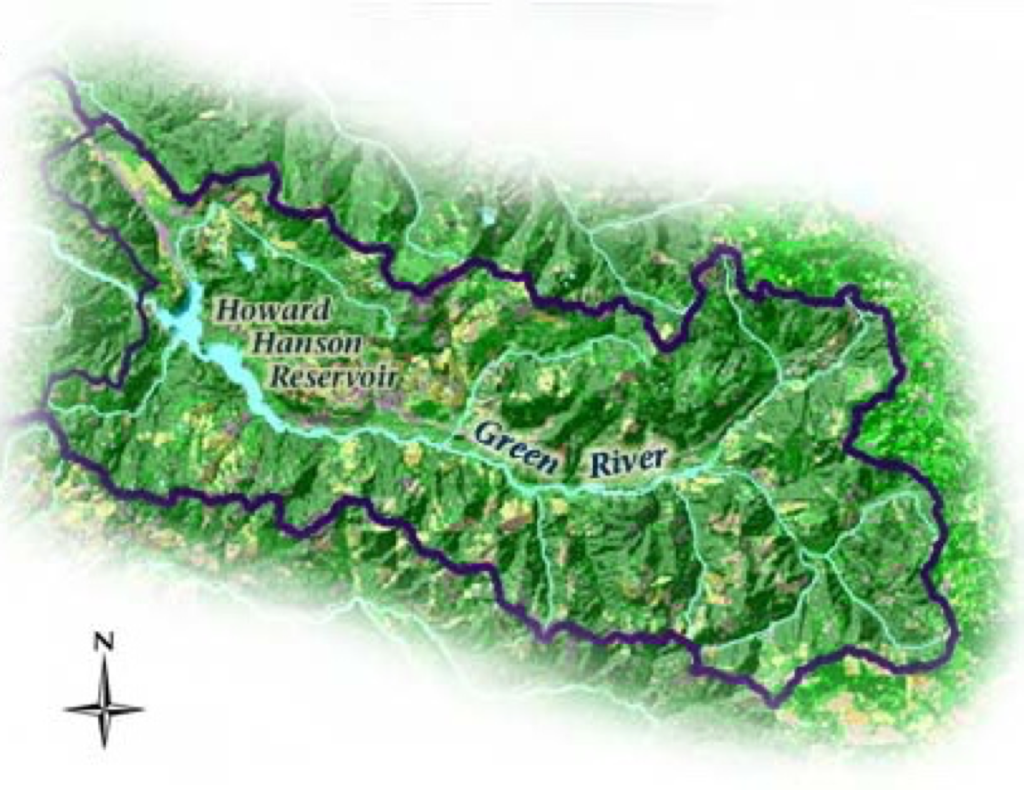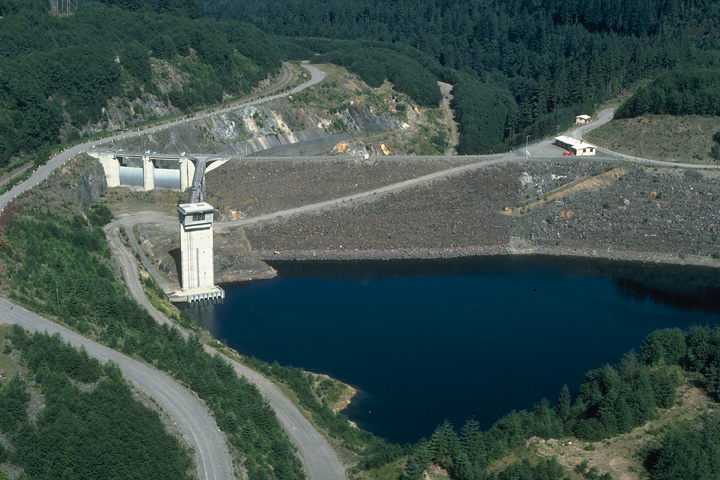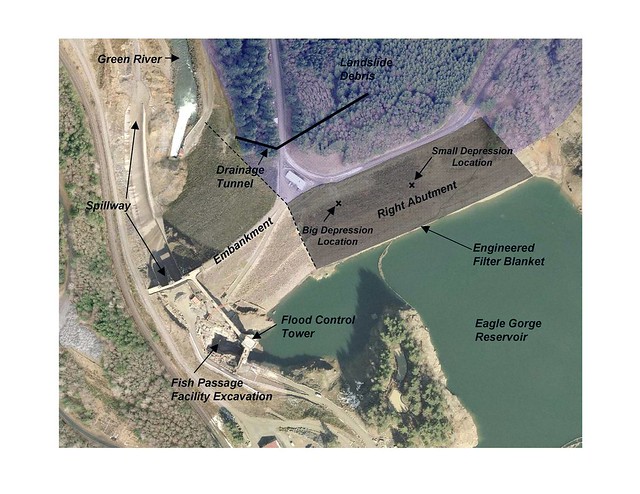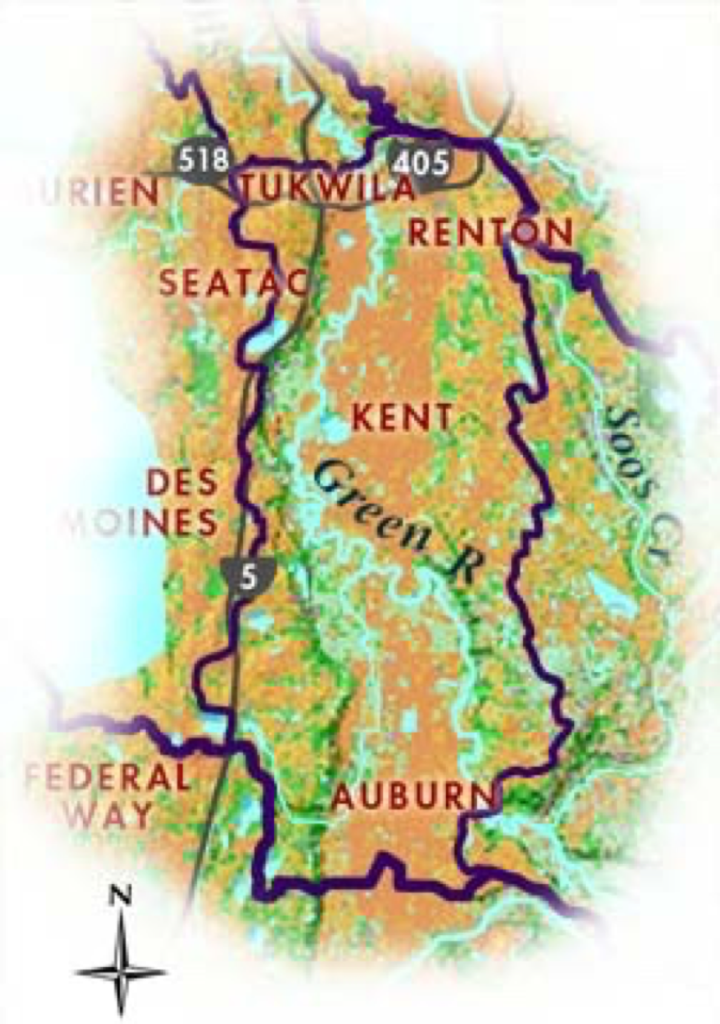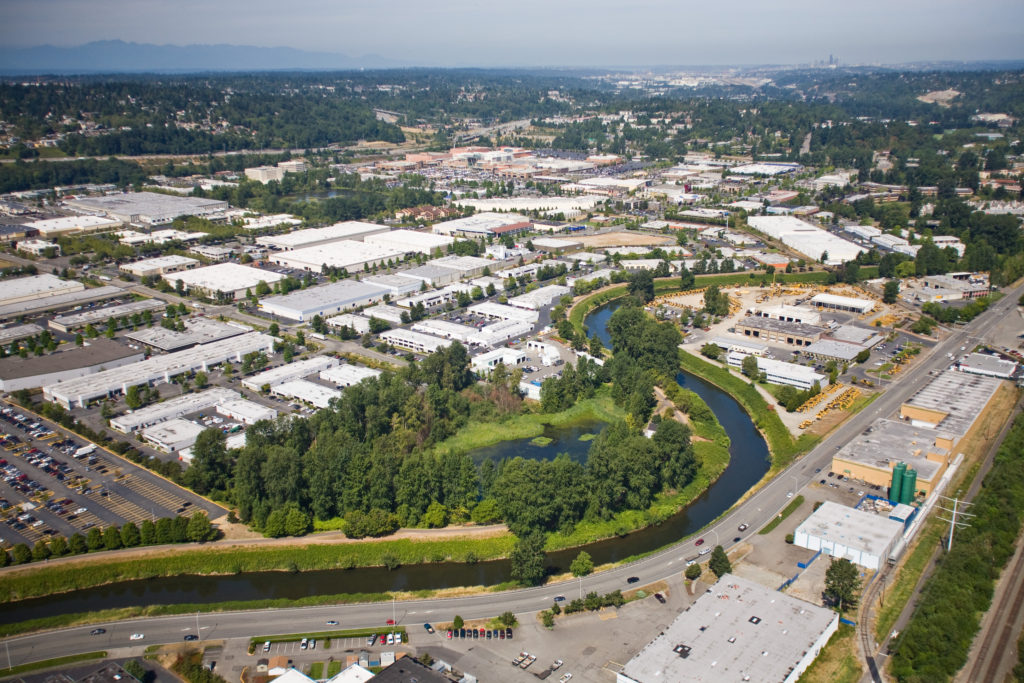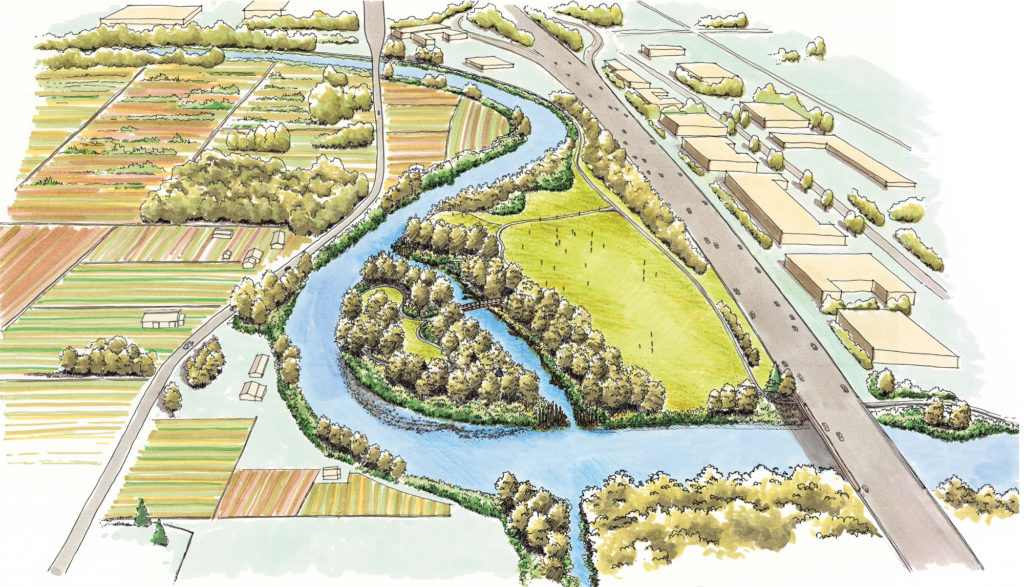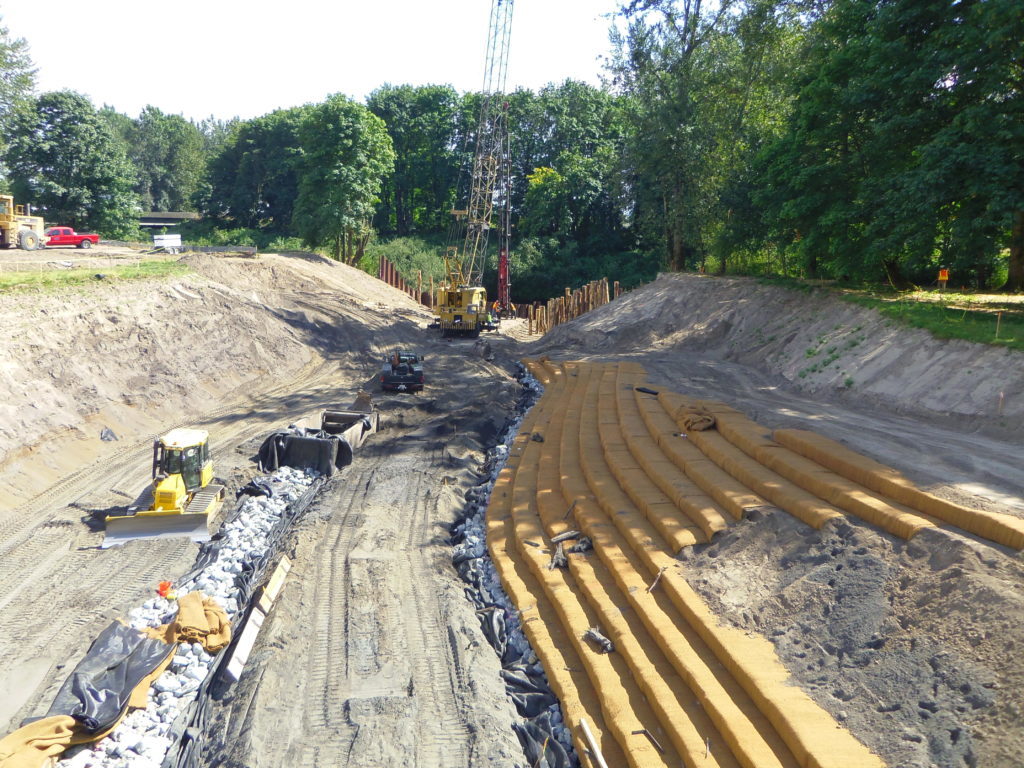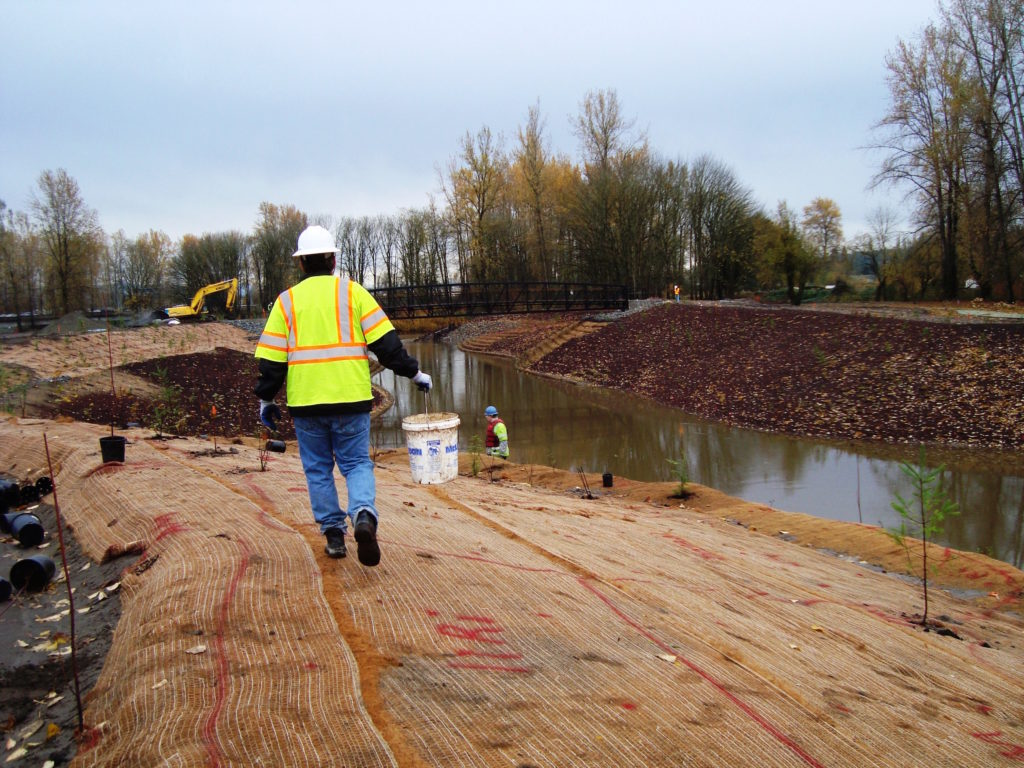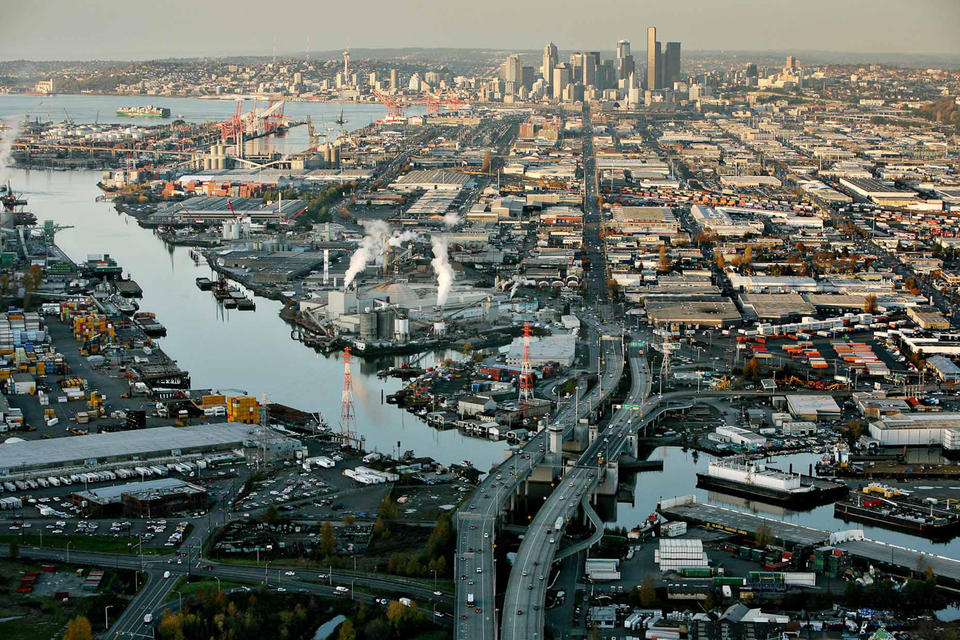Green-Duwamish River Watershed
The Green-Duwamish River, a home of native chinook, coho, steelhead salmon, and bull trout, flows over 93 miles from the Cascade Mountains to Elliott Bay. It may sound like two different rivers, but it is one – referred to as the Green River high in the watershed, and the Duwamish River for the lowest 12 miles of its length. Scientists have divided Green River/Duwamish Watershed into 4 subwatersheds, which each provide different habitat for salmon, and have different challenges:
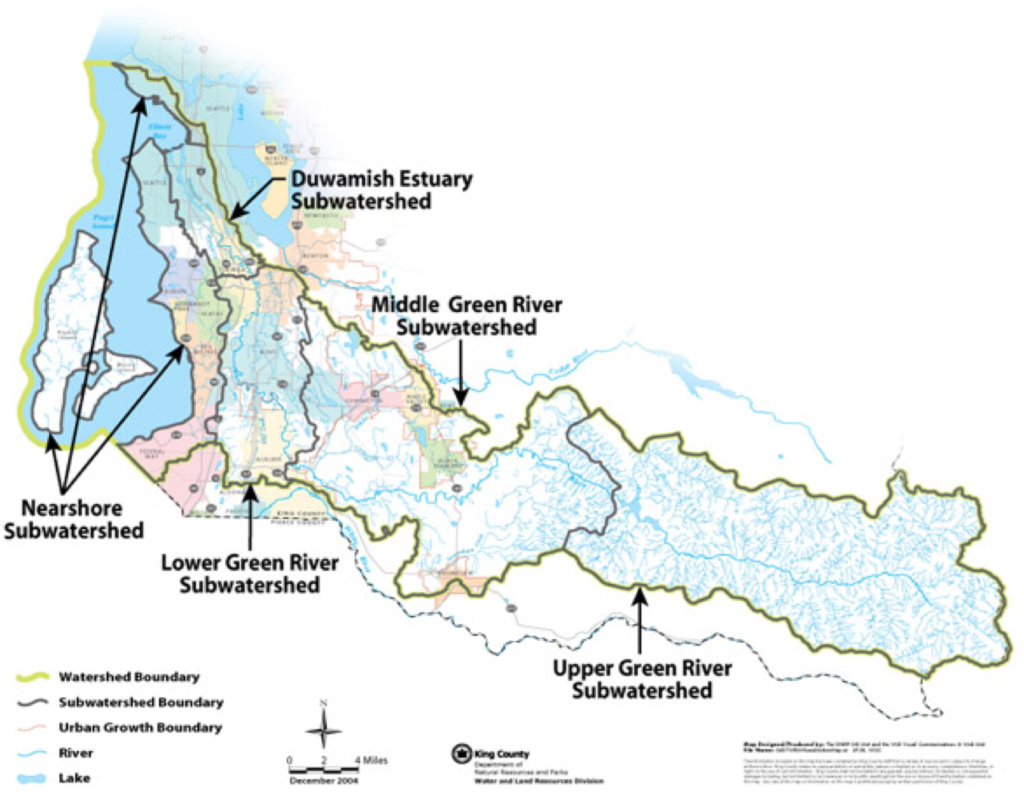
1. Upper Green River Subwatershed
The Upper Green River Subwatershed stretches 30 miles east the Cascade Crest, high in the mountains. The pristine forested habitat is protected, and the clean water provides much of the drinking water for the City of Tacoma. This subwatershed is where Howard Hanson Dam located.
The US Army Corps of Engineers built the Howard Hanson dam in 1961. The dam was built to protect the valley below from flooding. Unfortunately, the dam also cut fish off from 45% of the stream historically available. Making the dam passable for fish is a goal for the future.
Challenges to Salmon
The major challenge of this subwatershed is the dam. Spawning fish cannot get up. Even if they could (such as through catching and driving them around), the juvenile fish could not get downstream.
If the fish could get through Howard Hanson dam, they still would face additional habitat challenges, including:
- There are additional barriers to fish traveling up the extensive streams, such as by forest roads, which have sent smaller streams through pipes to get under the roads. Those pipes are often barriers to fish – either because the water flows too fast through the pipe, or the pipe becomes perched above the stream and the fish can’t jump up to reach it.
- Some of the smaller streams lack shade from streamside plants, and no longer have sufficient wood in the stream to provide cover, and pools for the fish.
Project Solutions to These Problems
- Fish Passage: The Army Corps of Engineers and the City of Tacoma are working together to construct and operate fish passage facilities to make possible the safe migration of fish upstream and downstream past the two dams. Construction of the upstream fish passage facility by Tacoma Public Utilities was completed in 2005. The Army Corps of Engineers is still working on a design for a facility that would allow juvenile salmon to safely pass downstream.
- Culvert Replacement in Gale and Boundary Creek: Improve tributary access. Tacoma Water and the Army Corps have worked on projects to allow fish to use both mainstem and tributaries. This project replaced a culvert with a bridge and removed another road, so that fish have access
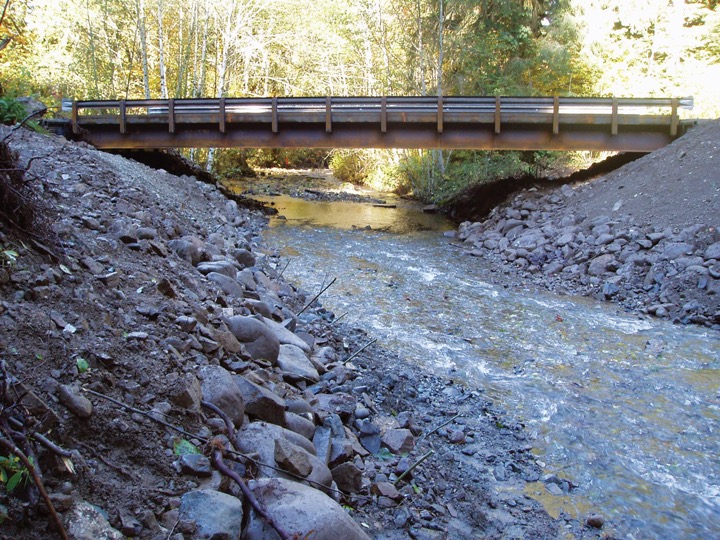
2. Middle Green River Subwatershed
The best salmon habitat remaining in the watershed is found in the Middle Green River subwatershed. Every year, thousands of Chinook salmon spawn in the Green River mainstem and on Newaukum and Soos Creeks. Thousands more coho salmon spawn in tributary streams.
This subwatershed starts at east of Auburn and stretches to the location of Howard Hanson Dam (HHD). It includes two major tributaries: Soos Creek and Newaukum Creek
While this subwatershed has experienced rapid urbanization during the last two decades, it provides the primary spawning and freshwater rearing areas of the Green/Duwamish and Central Puget Sound Watershed. Most lands near the Green River mainstem are farms, small commercial forests, or parks.
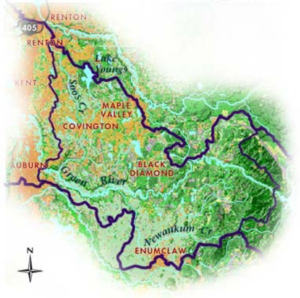
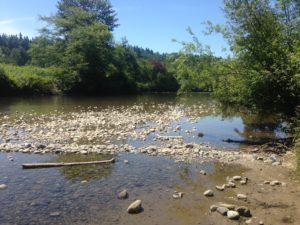
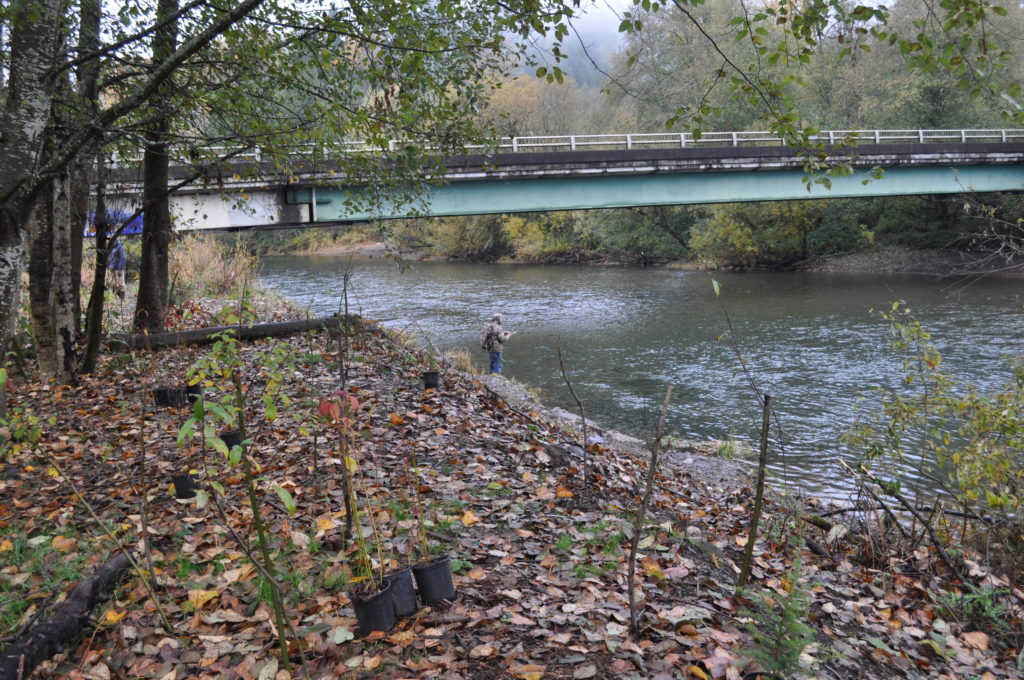
The middle Green River area has some lovely stretches of nice habitat.
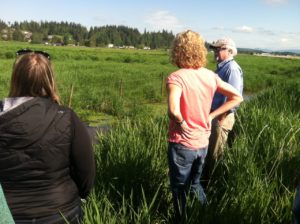
Newaukum Creek flows through farmlands,
often with no vegetation with shade.
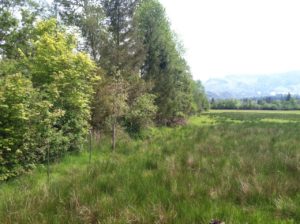
A Mid Sound project to plant trees along a stream on
a farm to provide better fish habitat.
Challenges to Salmon
This subwatershed has some great habitat, but also a number of challenges for the fish in this area, including:
- Many areas have been channelized, with levees to reduce flooding risk. These levees have limited so-called “off-channel” habitat – the side-channels, backwaters, wetlands and oxbows where juvenile salmon like to spend time, without fighting the fast water, eating and growing.
- In the tributaries, there is often too little shade, and the streams get too hot for salmon.
- In both tributaries and the mainstem, there is not enough wood in the streams. Salmon like complexity in the river – with areas of slower water to rest in, logs to hide under, and areas where bugs and other food is plenty.
- There is a profusion on non-native plants and animal species. Invasive plants –such as knotweed and blackberry – do not do as good a job as natives for important things: roots keeping the soil from eroding, the right type of bugs who can feed salmon, and the good shade to keep water cool.
Project Solutions to These Problems:
Habitat restoration projects in the watershed are an important part of the solution.
- Fenster Levee Setback and Floodplain Restoration: This project excavated and removed 700 linear feet of the old Fenster levee. Instead, they constructed a low, revegetated bench and gently sloping riverbank to provide overhanging vegetation, accommodate floodwaters, and reduce floodwater velocity along the bank.
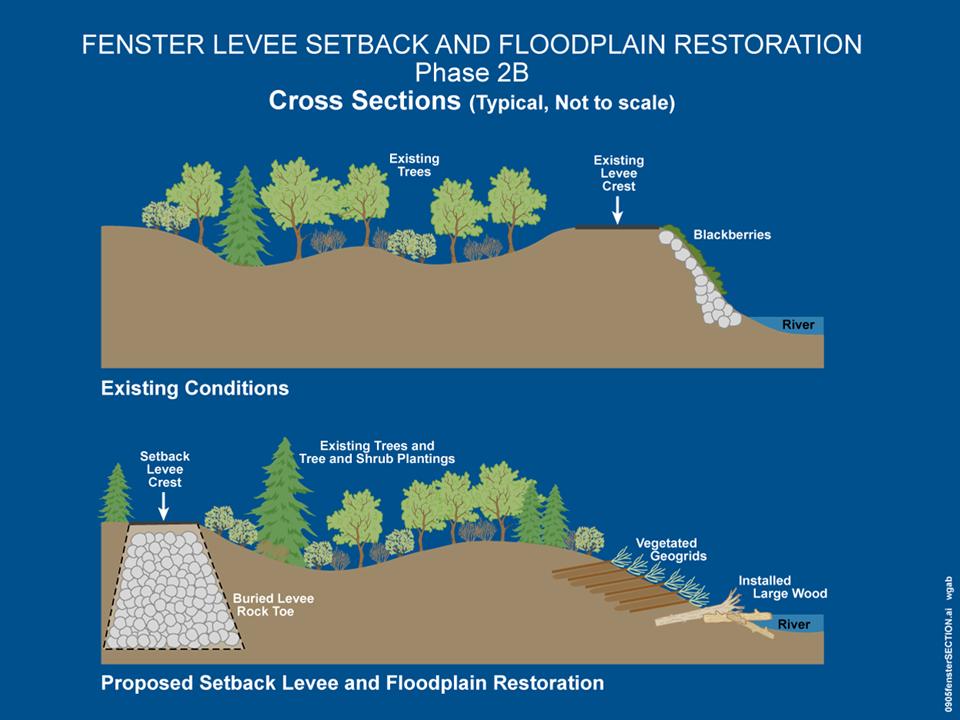
Project Cross Section
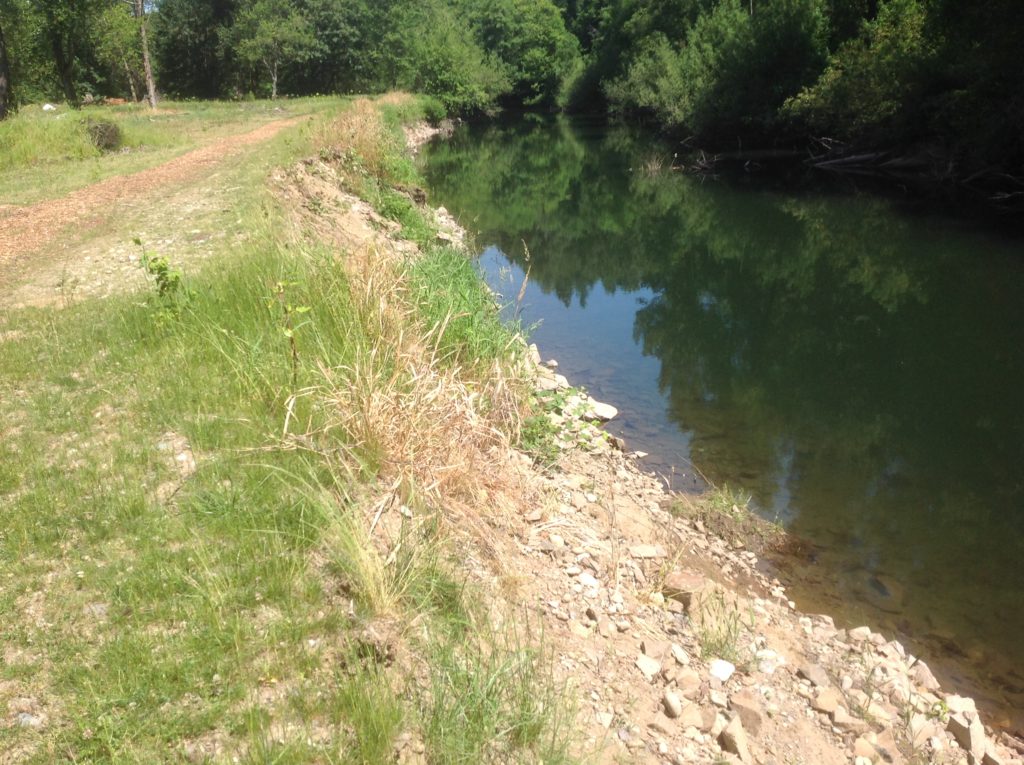
Before supply rock removal
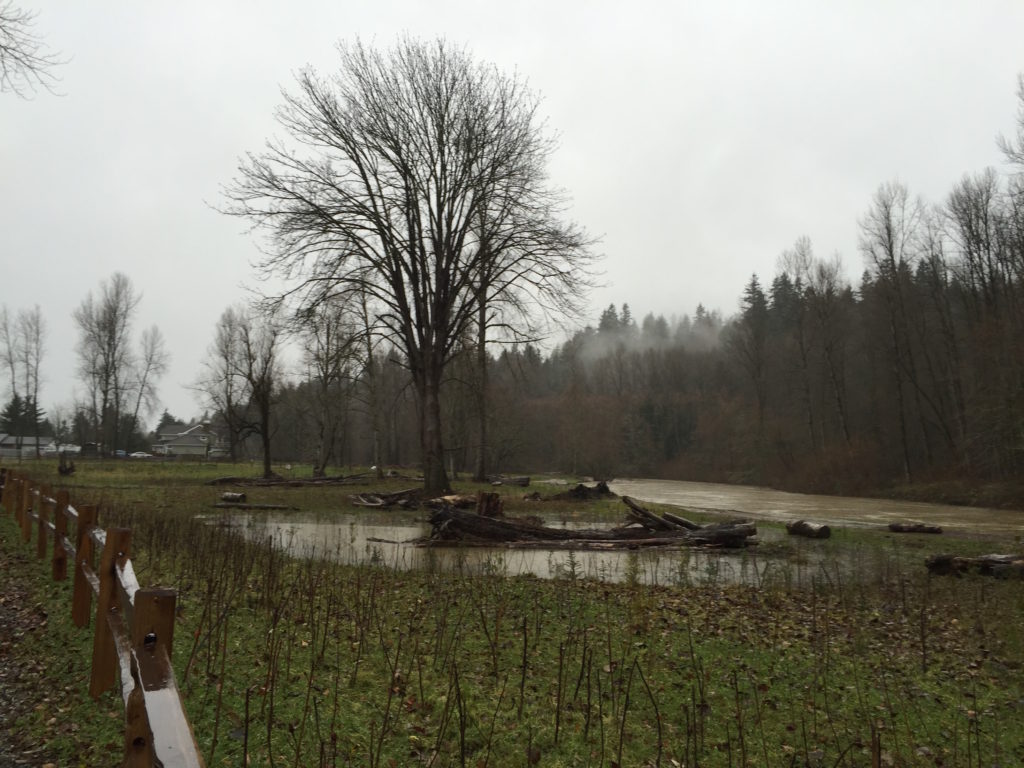
Post project during high river flows
- Soos Creek boat ramp: This 1.8-acre site was covered with invasive blackberry, with little shade or native vegetation. The Green River Coalition has been working to restore this site since 2013, to remove the blackberry. Mid Sound joined the partnership in 2016. In 2017, students from Mill Creek Middle School and the Duwamish Youth Corps worked together to plant native plants, with assistance from Dirt Corps and Sustainability Ambassadors.
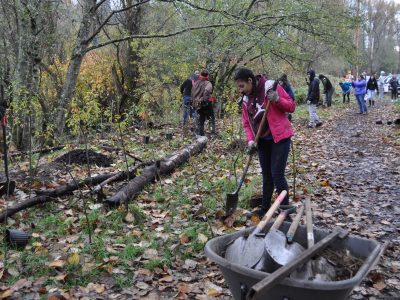
- North Fork Culvert Replacements: Mid Sound replaced two blocking culverts on the North Fork. The first was the site of a 100 year old dam and culvert that created a full blockage to fish. The old culvert was perched 8 feet in the air, it was replaced with a larger culvert. Another perched culvert that was a partial barrier during certain flows, and a full barrier at other flows, and was so undersized that high water would often flood the road. The new box culvert provides free access to fish during all flows.
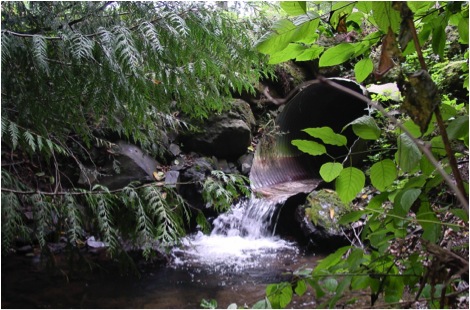
Before
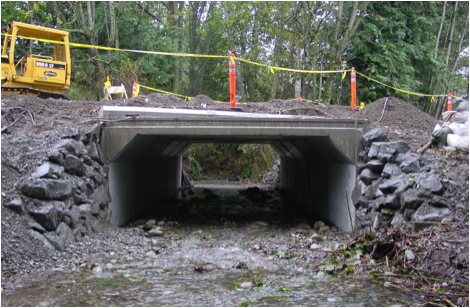
After
3. Lower Green River Subwatershed
The Lower Green River subwatershed has been dramatically transformed over the last 130 years but still performs a vital role for the salmon of the watershed—as a migration corridor used by Middle Green River fish going to and from the Duwamish estuary. It also provides limited rearing habitat for fish produced upstream.
This subwatershed starts at the upper limit of the Duwamish estuary, and winds east to the Highway 18 bridge. Its major tributaries include Mill Creek (Auburn) and Mill/Springbrook Creek (Renton and Kent).
This part of the watershed has undergone multiple transformations since 1870. Now it is a center for manufacturing, warehousing, and commerce.
Challenges to Salmon
Much of the Lower Green river has been extensively channelized, with large levees built in hopes of reducing flood risk. This has resulted in:
- Off-channel habitats that salmon love to rest in—like sloughs and wetlands –have been disconnected from the mainstem
- There is very little wood in the stream, which means that there is little instream complexity for the salmon.
- Streambanks lack shade and native plant vegetation, which would cool the water and provide food for young salmon.
- Smaller tributaries are often blocked, so that fish cannot use the upstream habitat.
Project Solutions to These Problems:
- Lower Mill Creek Floodplain Wetland Off-Channel Habitat Rehab: This project included excavation of over 1,000 linear feed of off-channel habitat (floodplain habitat) on the right bank of Mill Creek and created 55,000 square feet of underwater habitat for use by Chinook during peak outmigration periods, restoring floodplain functions. The new off-channel includes numerous large wood debris structures, removal of invasive vegetation, native riparian and upland plantings.
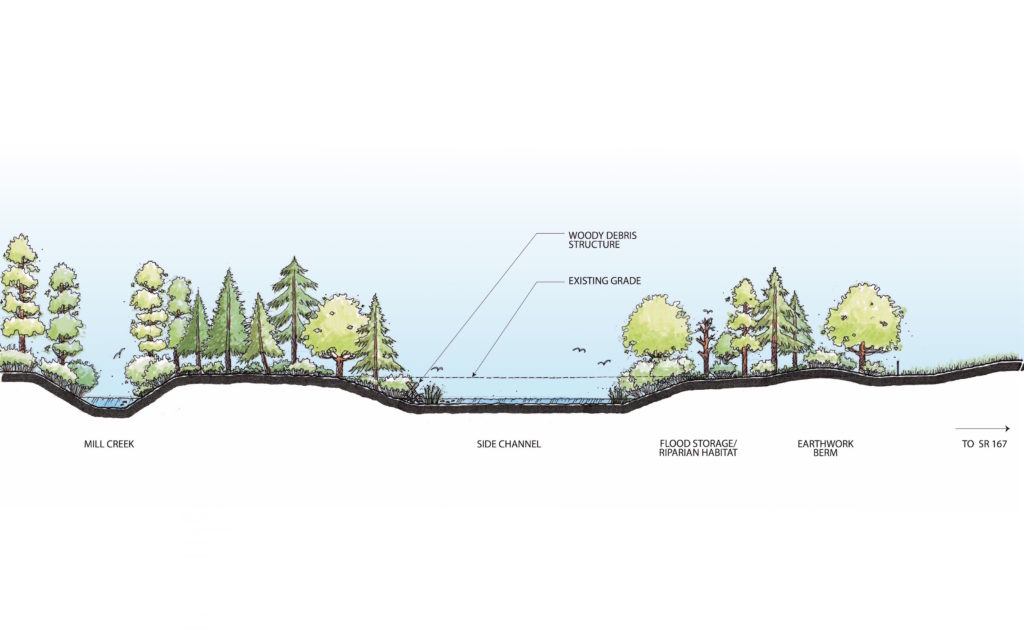
Side Channel
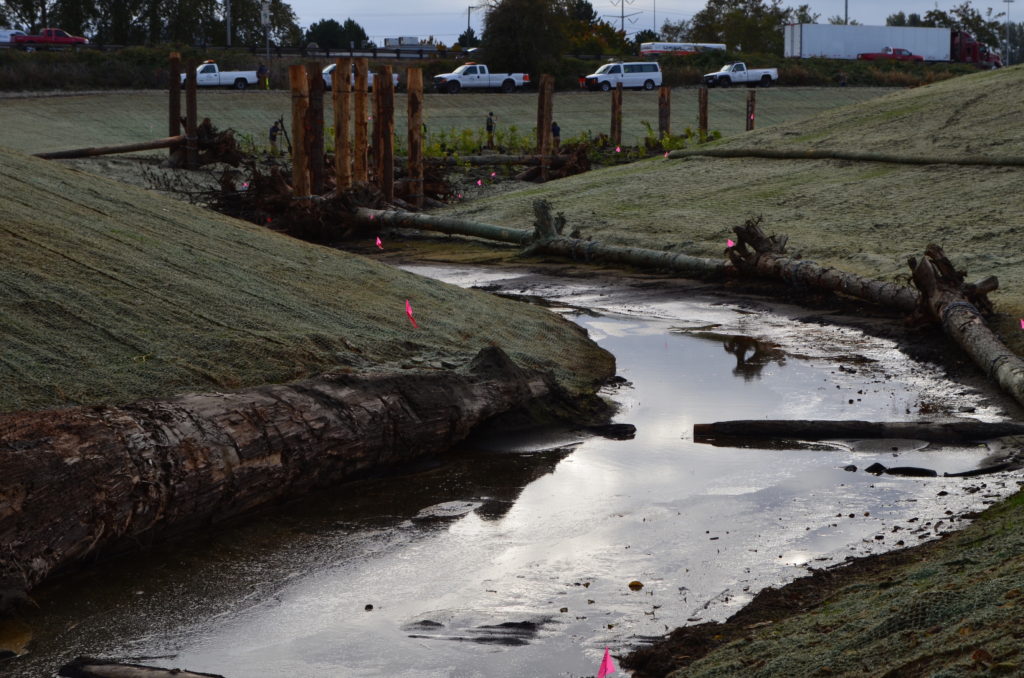
Channel during construction
- Riverview Park Side Channel Restoration in Kent: design, permit, and construct a side channel at Riverview Park in Kent. It will provide river access and other recreational opportunities
4. Duwamish Estuary Subwatershed
The Duwamish estuary plays a key role in the life history of salmon. Young fish migrate from freshwater streams and the river higher in the watershed to the estuary. In the estuary, they feed and their bodies adapt to salt water.
In the lowest 12 miles the river becomes the Duwamish River, and flows through the heart of Tukwila and industrial Seattle. Industrial development hit this area hard, and the 97% of the historic estuary was filled in.
In addition, the lower 5 miles became so polluted that the Environmental Protection Agency has declared it a Superfund site – one of the most toxic hazardous waste disposal sites in the country.
Currently all salmon species migrate, rear, and acclimate in this transitional area between river and marine waters. Juvenile Chinook and chum salmon are most dependent on this type of habitat. Small numbers of char (bull trout/Dolly Varden char) have been documented as using this reach.
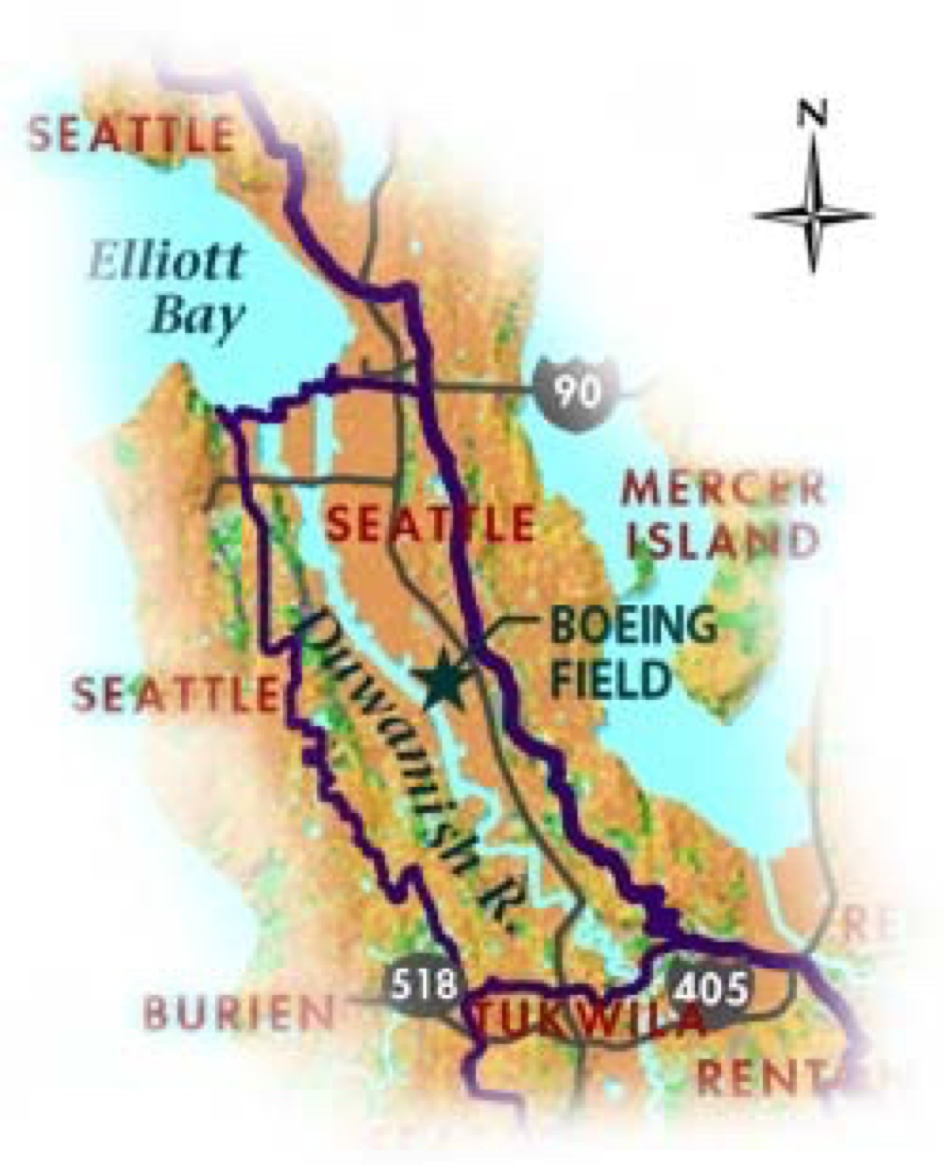
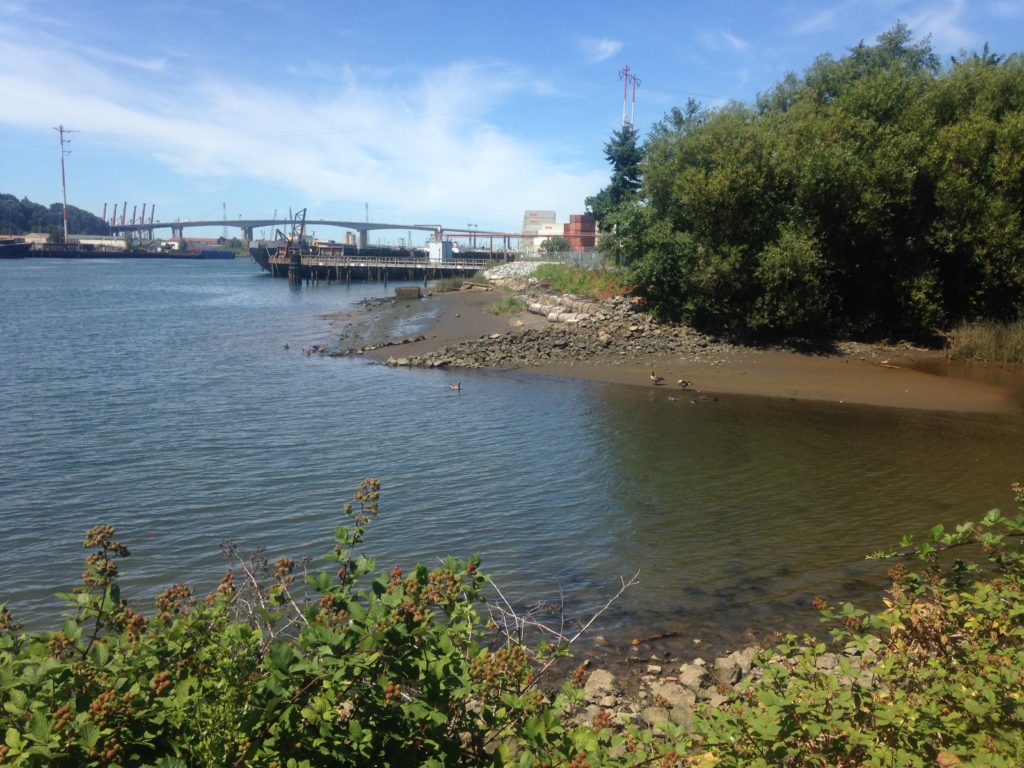
Duwamish River flows through industrial Seattle,
but still has lovely areas.
Challenges to Salmon
Historically, the estuary had lots of side-channels, vegetation and nutrients for juvenile salmon. Now there are only small patches of natural habitat, but most of the channel has been hardened. In addition, the water is polluted with stormwater and residual industrial pollutants.
Project Solutions to These Problems:
- Duwamish Gardens Acquisition and Restoration in Tukwila: Created new off-channel habitat that will benefit juvenile threatened Chinook salmon and other fish and wildlife was created, diverse native trees and shrubs were planted, and a trail, bench, and access to the river along a gravel path is now in place.
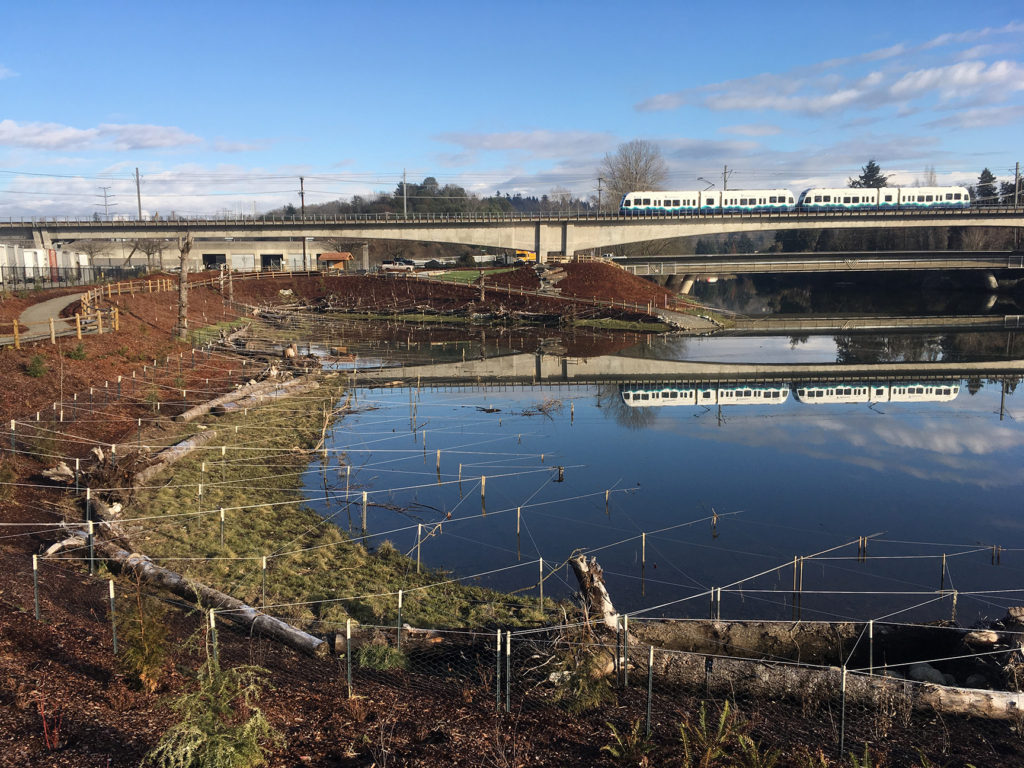
- North Wind’s Weir Duwamish Salmon Habitat Acquisition and Restoration Project: remove contaminated soils from the site, construct an off-channel habitat that will benefit juvenile threatened Chinook salmon and other fish and wildlife, planting of the site with native upland and emergent (marsh) plants
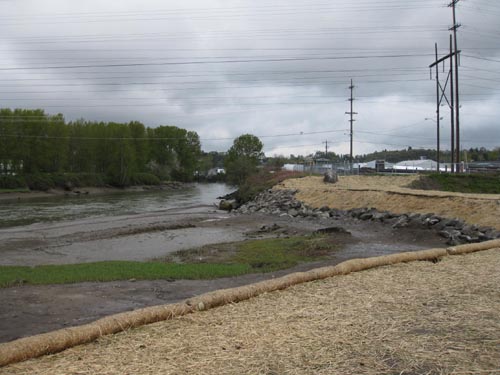
The removal of the last contaminated soil earlier in 2009
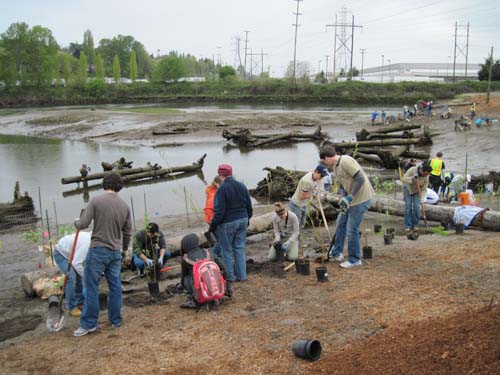
Planting the final trees and shrubs in the “upland” areas of the project.
- Codiga Park Riparian Corridor Enhancement: Codiga Farms Park is located on the east bank of the Duwamish River. This project improves a riparian corridor of Codiga Park for juvenile Chinook salmon habitat. This area was cleared of invasive plant species with the help of community volunteers and EarthCorps crews under People for Puget Sound’s management. The area is currently being maintained and monitored by volunteers called Puget Sound Stewards who are managed by EarthCorps.
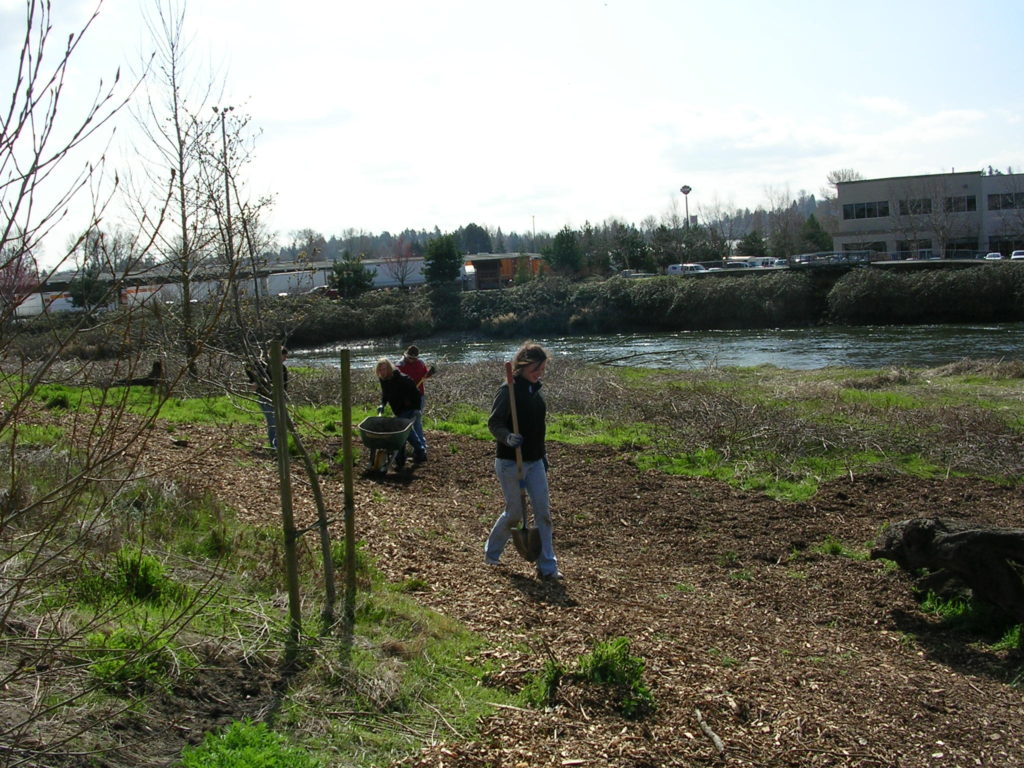
- Riverton Creek Flapgate Removal II: The City of Tukwila will improve habitat conditions along the Riverton Creek and restore fish access between the creek and the Duwamish River, providing off-channel rearing habitat for salmonids. Restoration will include: Adding large wood to the creek channel Removing invasive vegetation and planting native trees and shrubs to establish a riparian buffer along 400 ft on the Duwamish River and on each side of the creek, including a ¼ acre emergent wetland Removing two perched culverts and flapgates Removing fill from 0.1 acre of estuary Installing a new pedestrian bridge for the Green River Trail Constructing a structural sheet pile wall to reinforce and protect the roadway and the southern bridge abutment. Ongoing project
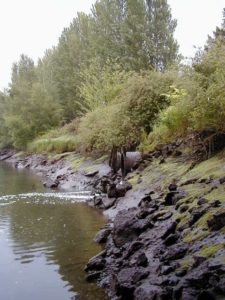
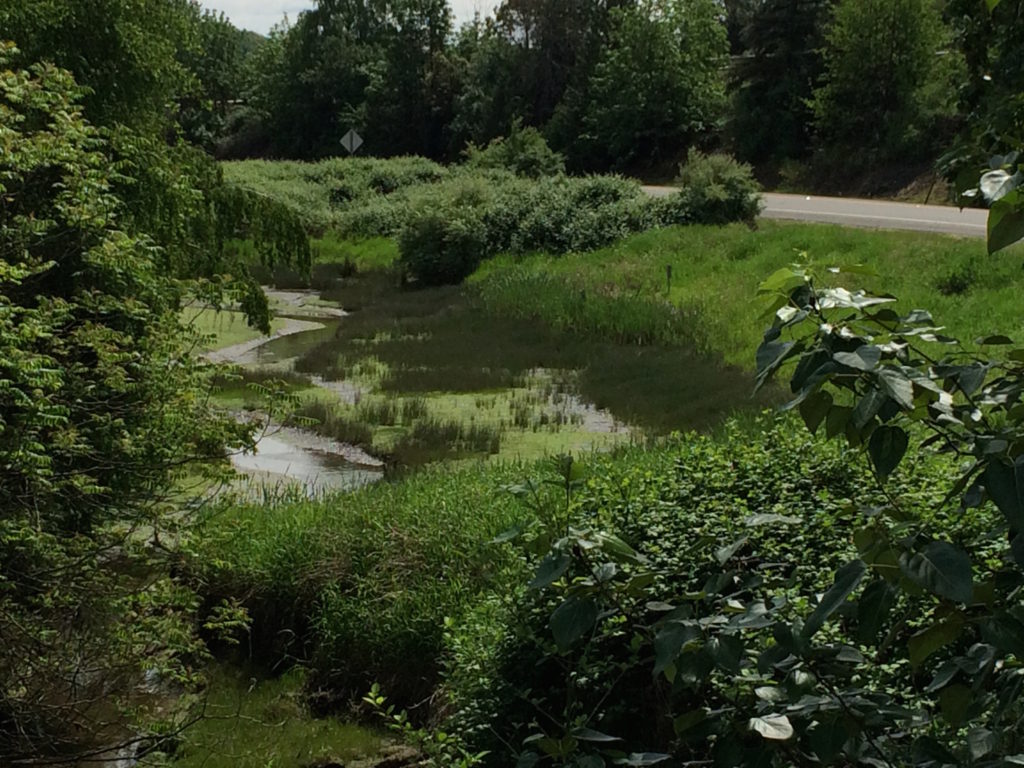
Despite Development, Salmon Return
The Green-Duwamish is one of the most modified rivers in the state. Despite this, salmon return every year. Chinook, Chum, Coho, Steelhead, Pink, Cutthroat and Bull Trout all use the habitat in this area.
Both wild and hatchery populations of fish use these waters. Because wild fish stocks are no longer as abundant – likely due to habitat modification, among other causes – several hatcheries also operate in the area, such as Soos Creek Hatchery, Icy Creek Hatchery, and Palmer Hatchery.
King County and its many cities, tribes, and citizens, have come together as the WRIA 9 Watershed Ecosystem Forum to work to restore the endangered Chinook salmon in this area.
Mid Sound’s Work
Mid Sound has focused much of its work in this watershed in Newaukum Creek, but has also worked in other creeks in the watershed, such as Longfellow Creek in West Seattle.
What you Can Do
Do you live in the Green-Duwamish watershed? See our What You Can Do page to see how you can help restore the Green/Duwamish watershed.
If you want to volunteer, Duwamish Alive has great events twice a year to engage volunteers in restoration sites around the River.
You can see fish in the streams in fall each year. The Salmon SEEson program has a list of great viewing sites.
